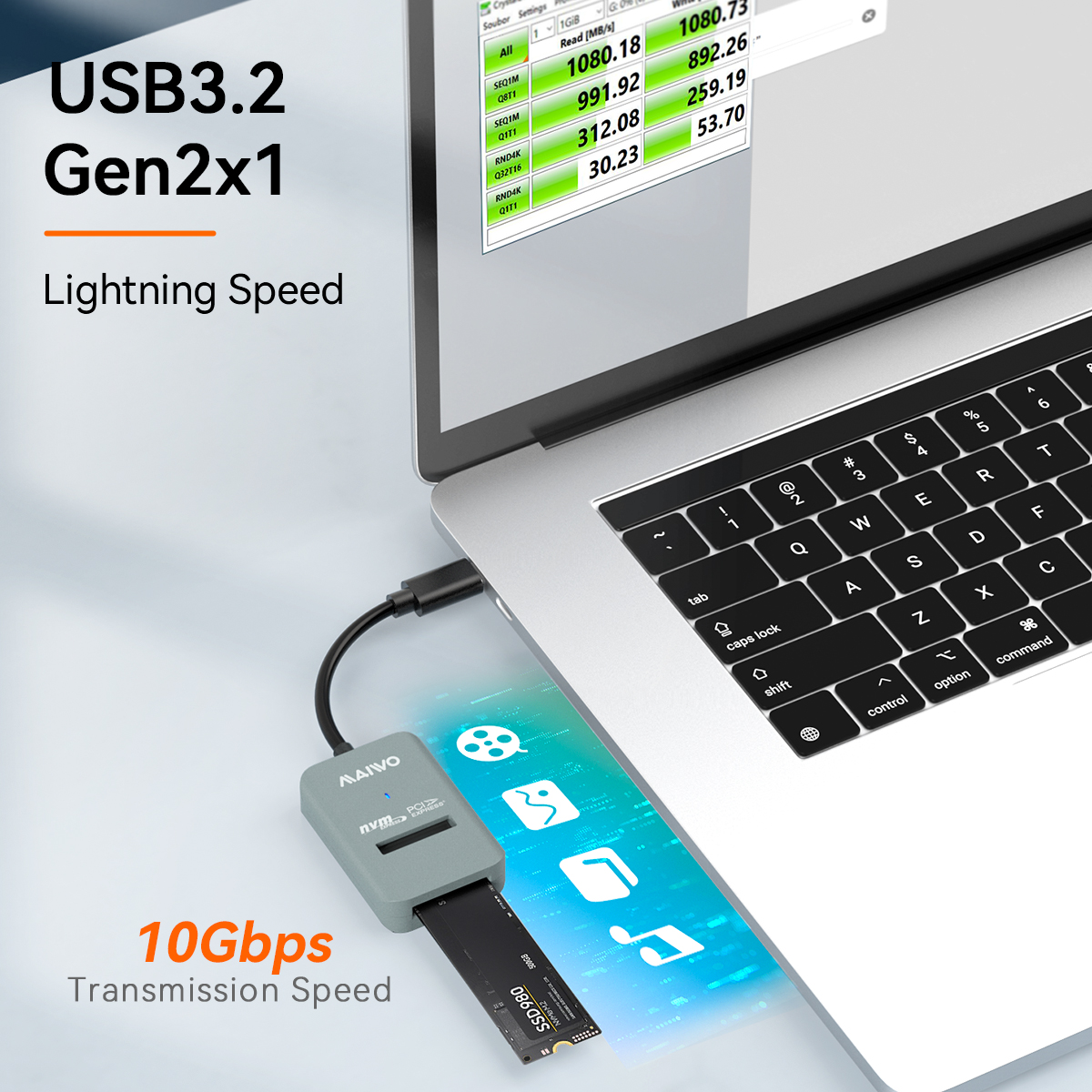In the ever-accelerating world of technology, storage solutions have taken center stage as one of the most critical components influencing a device's overall performance. Among these, the M.2 SSD (Solid State Drive) has emerged as a star player, known for its blazing-fast speeds and compact form factor. When housed within an external enclosure, the M.2 SSD's performance gains a new dimension. This article dives deep into the realm of M.2 SSDs in external enclosures, unraveling the extent of their speed, factors influencing their performance, and the real-world implications of this setup.
①.The Need for Speed
As digital data becomes increasingly voluminous and complex, the demand for faster data transfer and access speeds has grown exponentially. This demand extends across a plethora of use cases, from professional endeavors like video editing and 3D rendering to everyday tasks like transferring large files or gaming. This is where the M.2 SSD steps in. M.2 SSDs, known for their use of NAND flash memory and lack of moving parts, deliver significantly faster data transfer speeds compared to traditional Hard Disk Drives (HDDs) or even SATA SSDs. They achieve this via the NVMe (Non-Volatile Memory Express) protocol, which leverages the capabilities of modern PCIe (Peripheral Component Interconnect Express) technology. However, when placed in an external enclosure, the performance dynamics can shift.
②. Factors Influencing Performance
Several factors play a role in determining the speed of an M.2 SSD when used within an external enclosure:
1. Enclosure Interface: The type of interface used by the enclosure, such as USB 3.0, USB 3.1, USB-C, Thunderbolt 3, or Thunderbolt 4, impacts the data transfer speeds. Thunderbolt interfaces tend to offer higher speeds compared to standard USB interfaces due to their wider bandwidth.
2. Enclosure Chipset: The chipset within the enclosure also plays a pivotal role. Some chipsets may bottleneck the data transfer speeds, negating the high-speed potential of the M.2 SSD.
3. Enclosure Design and Cooling: Efficient heat dissipation is crucial for maintaining consistent high-speed performance. Enclosures with inadequate cooling mechanisms might experience thermal throttling, which slows down the SSD to prevent overheating.
4. SSD Model and Type: The specific M.2 SSD model, whether SATA or NVMe, and its read/write speeds determine the upper limits of data transfer within the enclosure setup.
5. Cable Quality: For interfaces like USB and Thunderbolt, cable quality matters. Low-quality cables can introduce signal degradation, leading to reduced data transfer speeds.
③ Real-World Performance
In a real-world scenario, the performance of an M.2 SSD in an external enclosure can vary widely. An NVMe-based M.2 SSD encased in a well-designed and high-quality Thunderbolt 3 or 4 enclosure can achieve data transfer speeds comparable to or even exceeding the speeds of an internal M.2 SSD directly connected to the motherboard's PCIe slot. These speeds can approach or even breach the 2000 MB/s mark for both read and write operations.On the other hand, enclosures with USB interfaces might not fully utilize the potential of high-speed M.2 SSDs. USB interfaces tend to be more constrained in terms of bandwidth, often resulting in slightly lower data transfer speeds compared to Thunderbolt interfaces.
The marriage of M.2 SSDs and external enclosures opens up new vistas of performance possibilities. The high-speed nature of M.2 SSDs, when combined with well-designed and high-quality enclosures, can yield data transfer speeds that redefine our expectations of speed. Thunderbolt interfaces, with their wide bandwidth, emerge as the champions in this race, closely followed by other interfaces like USB-C. However, it's essential to remember that while M.2 SSDs in external enclosures offer remarkable speed, their performance is influenced by various factors, including the enclosure's interface, chipset, cooling, and the SSD itself. Understanding these variables and choosing the right components can significantly impact the achievable speeds.

In the grand scheme of things, the evolution of M.2 SSDs in external enclosures represents a continuation of our collective journey towards achieving ever-faster data access and transfer speeds. As technology advances and enclosures become more sophisticated, we can expect the boundaries of speed to be pushed further, empowering us with the tools to handle the data-rich challenges of the future.